Relation Between Angular And Linear Velocities
In this article, we will discuss the relation between angular and linear velocities. The rate of change of angular displacement is called angular velocity. And the rate of change of linear displacement is called linear velocity.
Consider a rigid body rotating about the z-axis with an angular velocity ω along a circle of radius ‘r’. Point P moves along a circle with a linear velocity V but the line OP rotates with angular velocity ω.
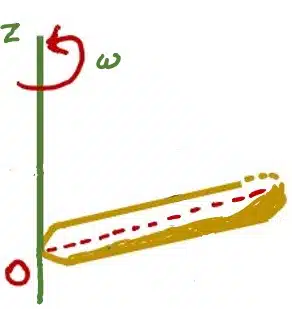
As the axis of rotation is fixed, the direction of ω remains the same and so can be considered as a scalar. Similarly, we only considered the magnitude of linear velocity which is also treated as a scalar.
Download pdf notes of Relation between Angular and Linear Velocities class 11 physics
Relation Between Angular And Linear Velocities
Consider the motion of point P along the circle. Let point P moves through distance P1P2 = Δs in time interval Δt. Then the reference line OP has an angular displacement Δθ radian in that time interval Δt.
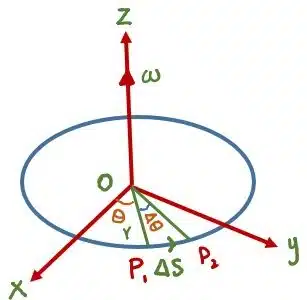
Then by the relation
Δs=r Δθ
Dividing the both sides by Δt and applying limit Δt -0
limΔt–0 Δs/ Δt = r limΔt–0 Δθ/ Δt
V=rω
This equation shows the relation between angular and linear velocities. Where v is the velocity of point P and ω is the angular velocity of reference line OP.
In the limit, Δt–0 the length of arc P1P₂ becomes very small and its direction is tangent to the circle at point P1.
Thus the magnitude of velocity when moving along the circle is V but its direction is tangent to the circle. That is why the linear velocity of point P is also known as tangential velocity.
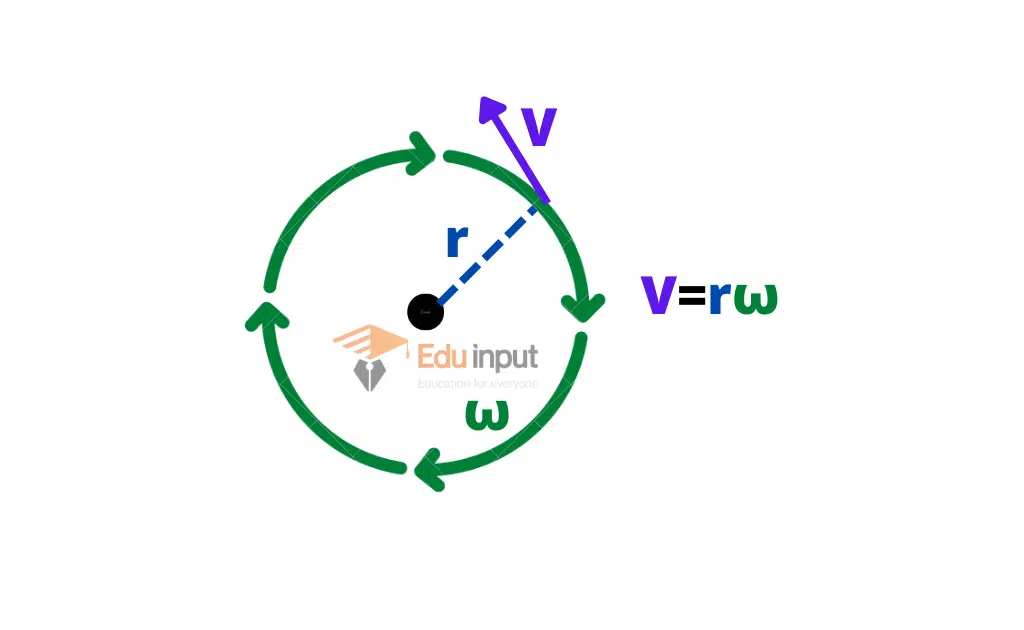
Difference Between Angular And Linear Velocity
| Angular velocity | Linear Velocity |
|---|---|
| The rate of change of angular displacement is called angular velocity | The rate of change of linear displacement is called linear velocity |
| In a circular motion, the angular velocity of a particle is along the axis of a circle. | In a circular motion, the linear velocity of a particle is along the circumference of a circle. |
| Angular velocity remains the same in a circle. | Linear velocity changes at every point in the circle. |
| The Units of Angular velocity are degree and radian. | The Unit of linear velocity is m/s. |
| Angular velocity is represented by ω | Linear velocity is represented by v |
Relation between Linear and Angular Acceleration
When the reference line OP is rotating with an angular acceleration α the point P will also have a linear or tangential acceleration α.
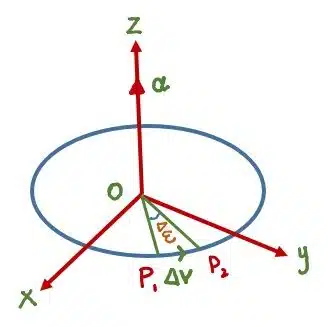
Let the change in linear velocity is Δv and the change in angular velocity be Δω in time interval Δt when the body is rotating along a circle.
Thus
Δv=rΔω
Dividing by Δt and applying the limit limΔt–0 we have
limΔt–0Δv/Δt = r limΔt–0Δω/Δt
at = rα
From equations of the relation between angular and linear velocities v = rω and at = rα it is clear that for a rotating body the points at different distances from the axis of rotation do not have the same speed or acceleration. But all points have the same angular displacement, angular speed, and angular accelerations.
Equations of Angular Motion
| Linear(a = constant) | Angular(α = constant) |
|---|---|
| Vf=vi+at | ωf=ωi+αt |
| S=vit+1/2gt2 | θ=ωit+1/2αt2 |
| 2as=vf2-vi2 | 2α θ= ωf2 – ωi2 |
The equations of angular motion are exactly the same as those in linear motion except that θ, ω, and α are replaced by s, v, and a respectively.
These angular equations of motion are only valid for fixed axes of rotation and constant angular acceleration. Since all angular vectors have the same direction, so they can be considered scalars.
Related FAQs
What is the relation between angular and linear displacement?
Angular displacement defines the movement of a segment as represents the change in angular position. Linear Displacement is movement in a straight line along a single axis – up and down or side to side.
The linear displacement of any point along a segment that is rotation can be calculated with: d = rθ as long as the angular position is expressed in rads.
How do you convert angular velocity to linear velocity?
If you want to calculate linear velocity, you have to take the angular speed and divide it by the radius.
What is the difference between linear and angular speed?
The rate at which the thing turns is described in units such as revolutions per minute, degrees per second, radians per hour, and so on. The linear speed is the speed at which a point on the edge of the object travels in a circular path around the center of the object.


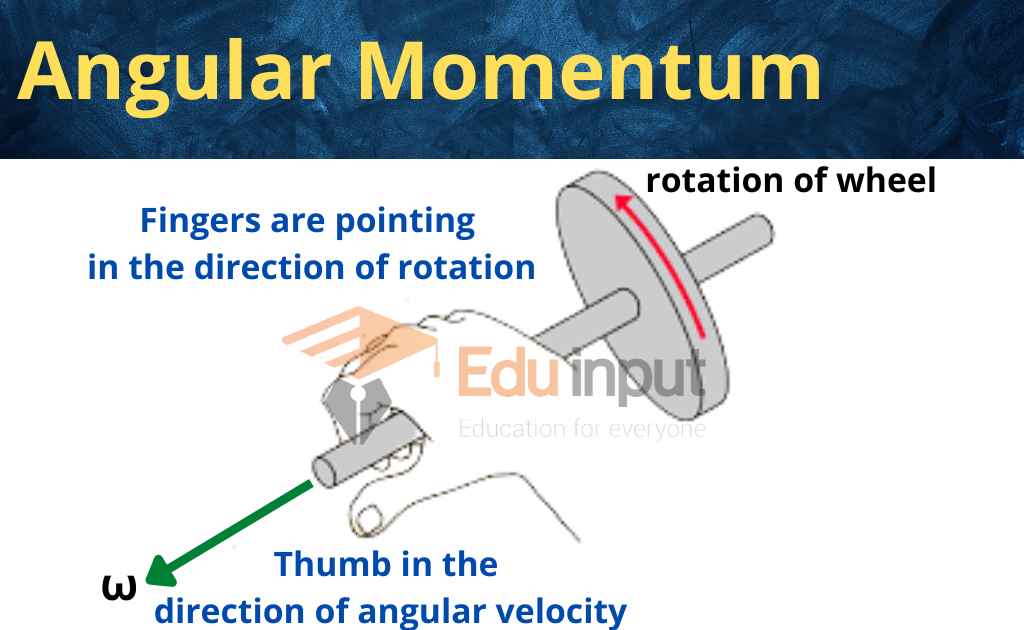
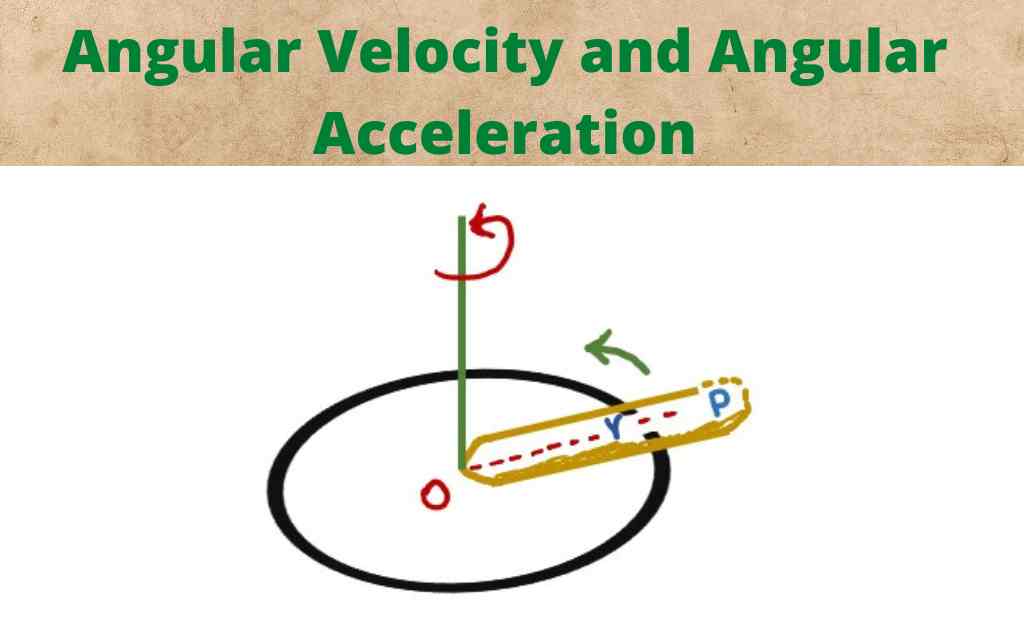
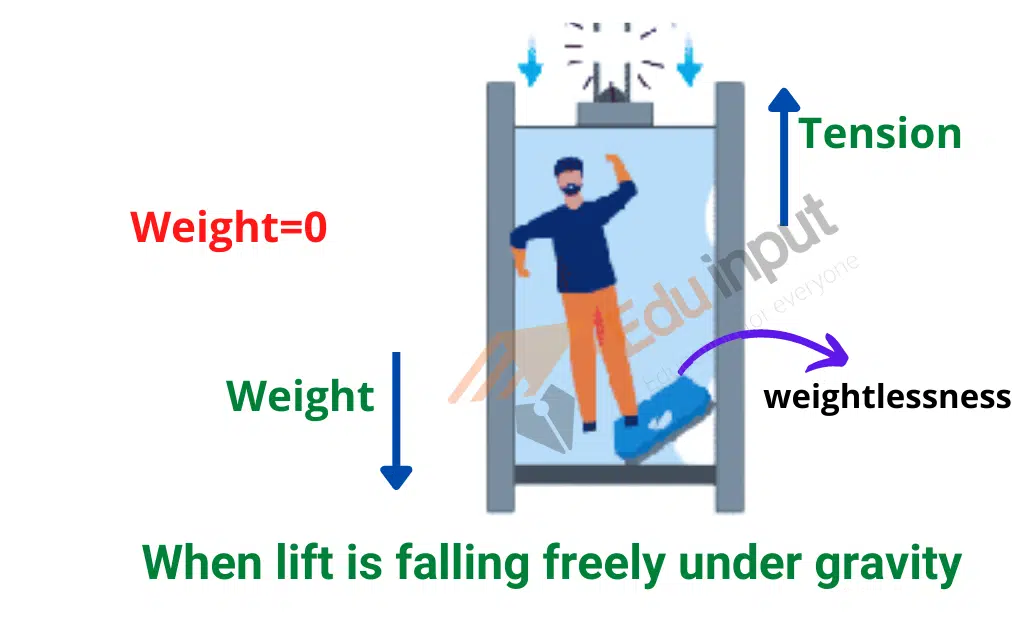


Leave a Reply